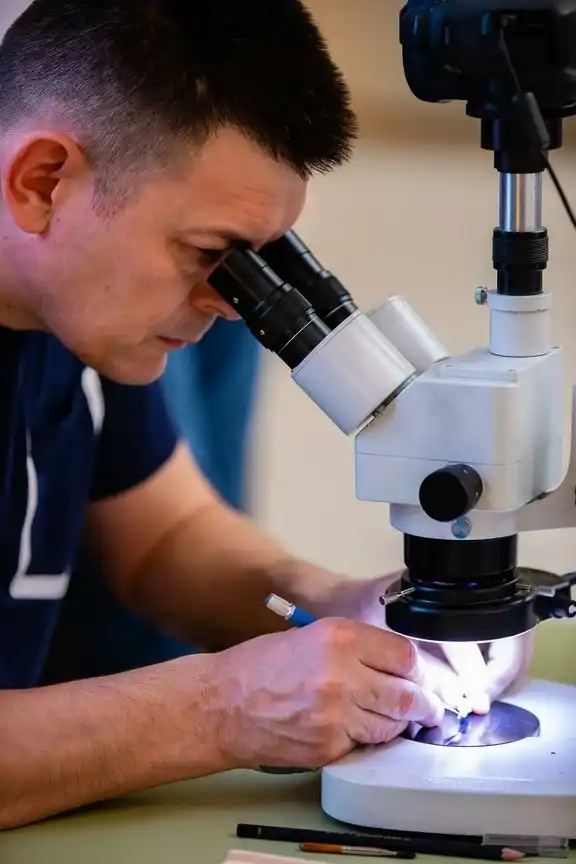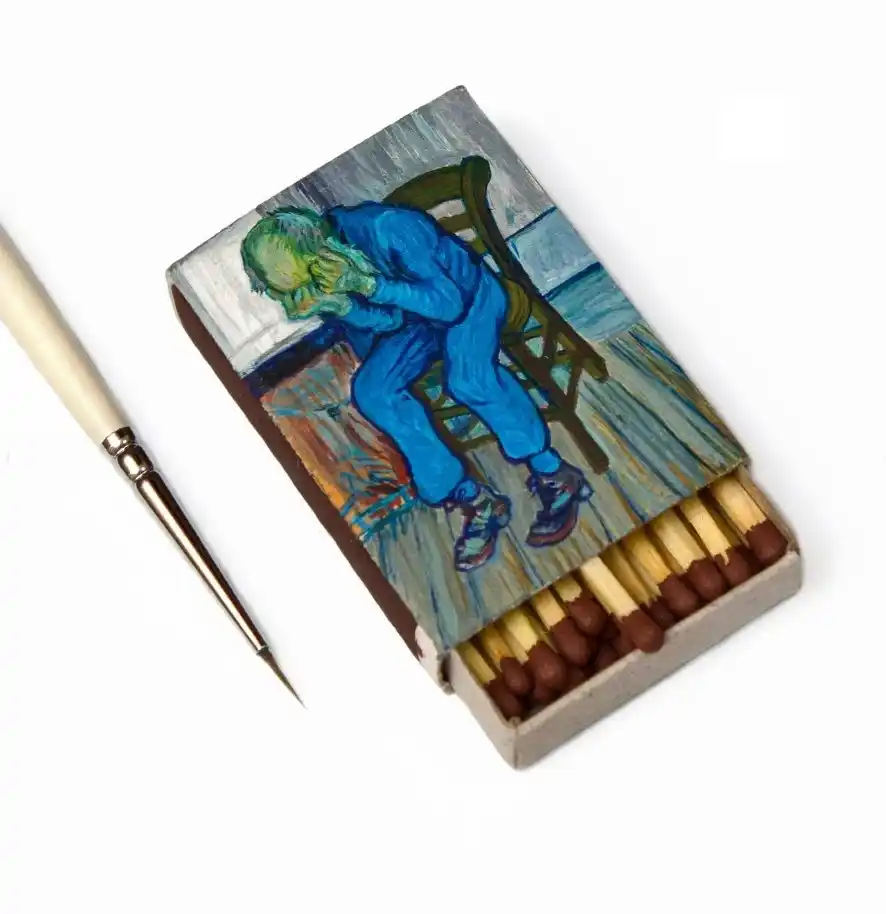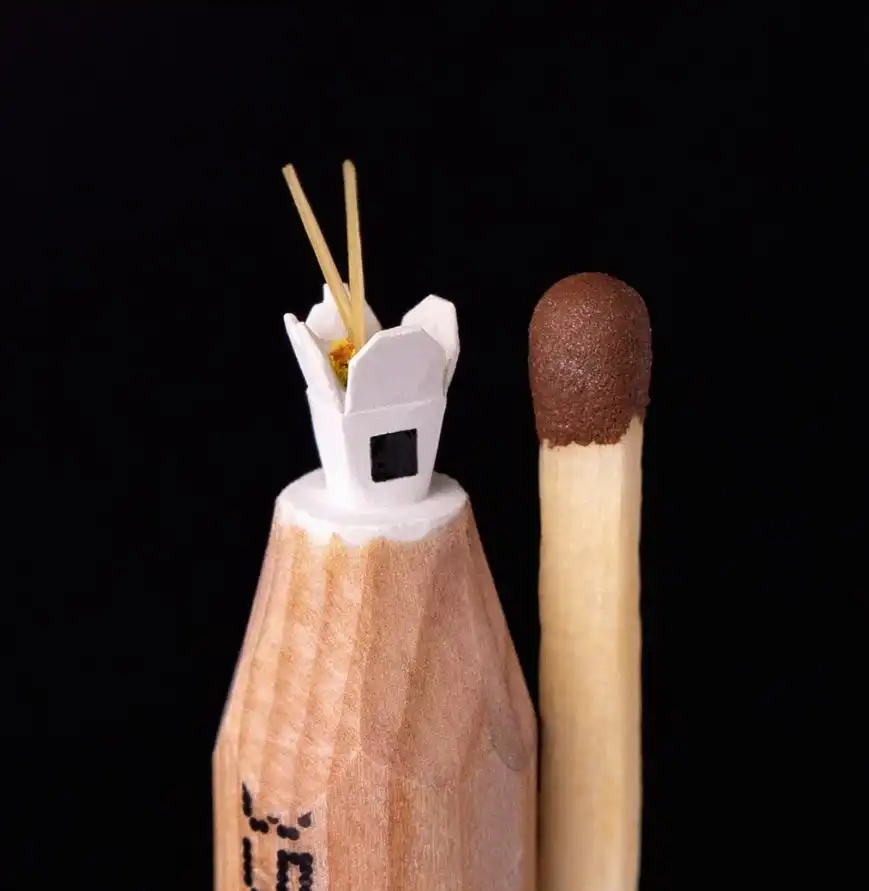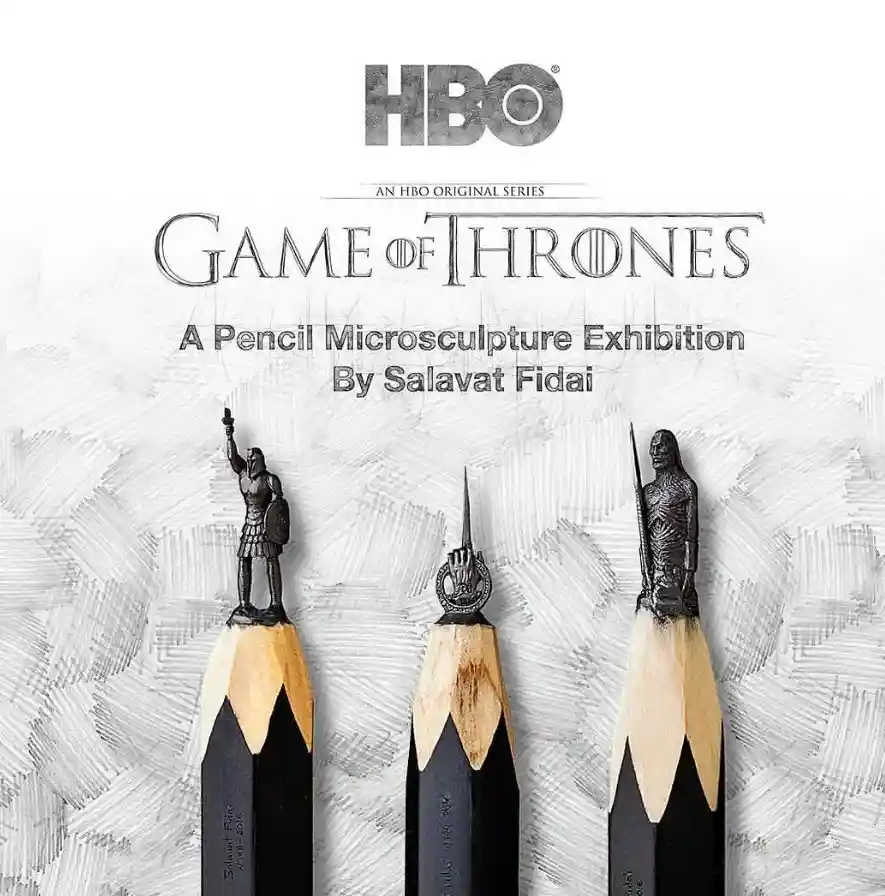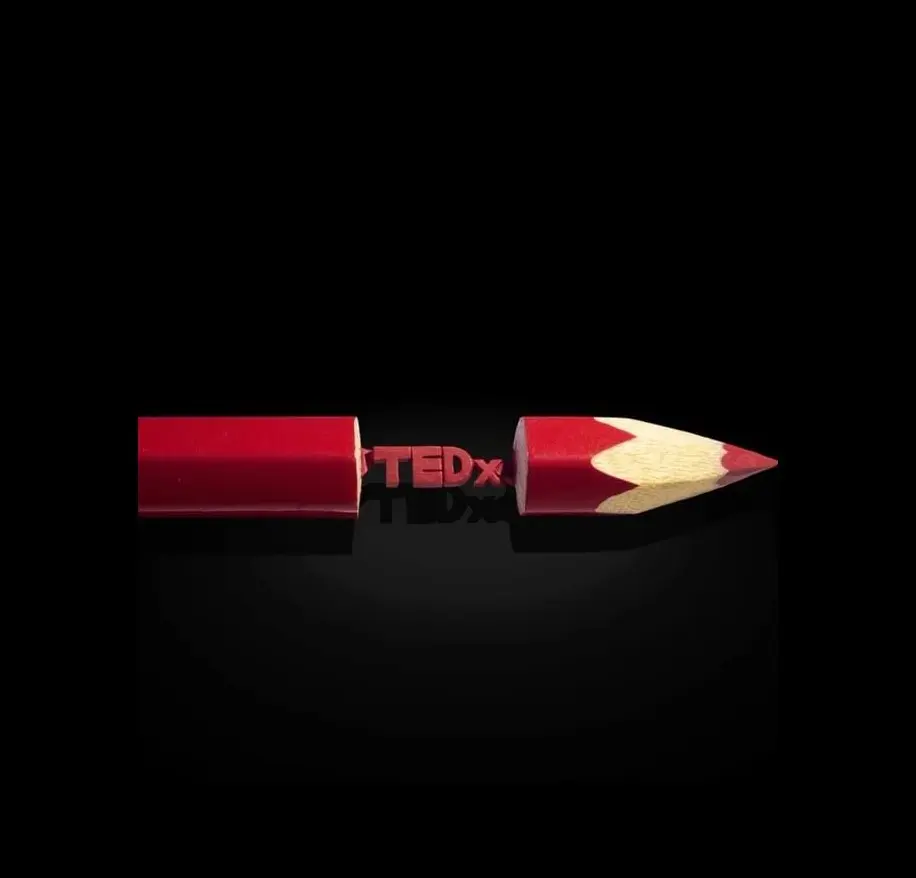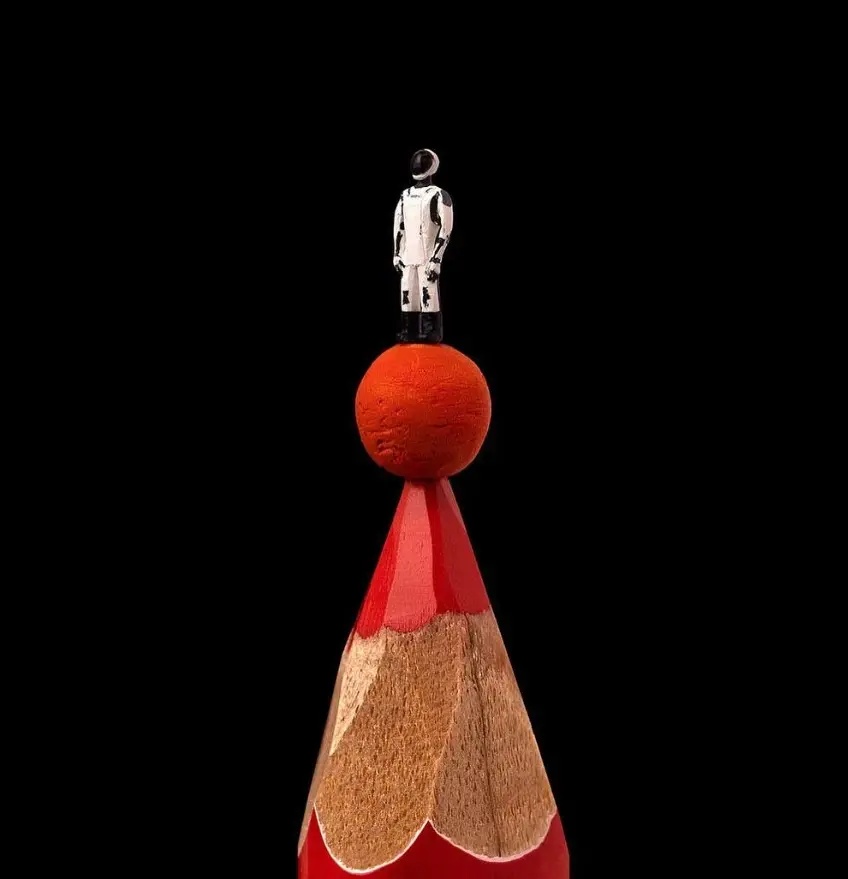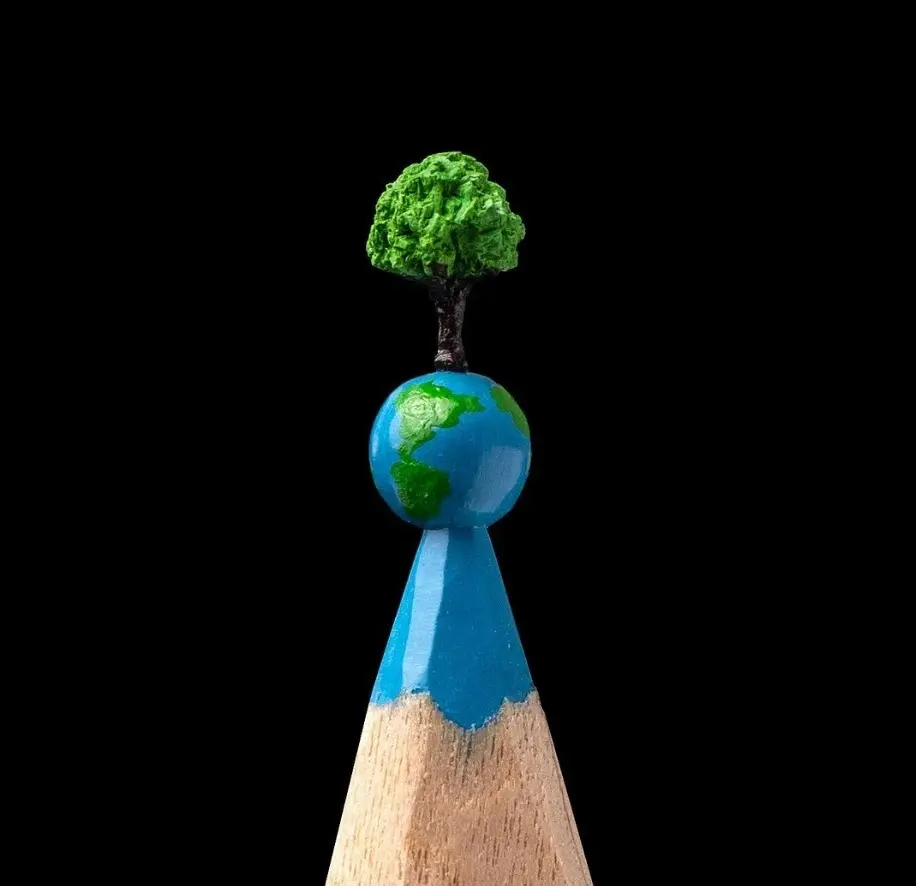This amazing artist once was not afraid to leave a prestigious job and completely turn his life around. He came, or rather to say, returned to art through digital photography, creating a whole series of unusual still lifes. Then he experimented with painting and began to create miniature paintings on matchboxes, pumpkin seeds, sunflower seeds and rice grains. And then he found something that forever determined his creative destiny – he began to create amazing miniatures on the tips of pencils.
At the end of the 90s, there were no social networks and such diverse ways to promote art online. The artist’s work did not promise a constant high income. My parents thought that becoming a professional artist was not the best idea. That’s why I didn’t become an artist like my parents, but decided to study to be a lawyer. A lawyer is a more prestigious and highly paid profession. I don’t regret it. I don’t see the point in regretting the past, about what has already happened. Yes, I have gained a lot of experience in communicating with people, learned how to manage employees, communicate, negotiate, learned how to sell goods and much more. I have lived an interesting and varied life and gained a lot of experience. Sometimes you can’t know how your experience and new knowledge will be useful in the future. Perhaps all this did not directly help me to become an artist, but I learned to cope with difficult tasks on my own. This is a difficult question. It is difficult for me to give an exact answer.
This has been accumulating for many years. The first reason was the usual office burnout. Monotonous boring office work exhausts and takes all the energy. The second reason is that I have attended many courses and training on personal self-development, a lot of classes to improve the skills of a manager, and others. In these classes, I realized that this is not my vocation and this is not what I would like to do all my life. When you were born an Artist, then one day you will no longer be able not to be an artist, you will not be able to ignore the call of your soul. One day I realized that I had to change my life and find an occupation that would satisfy me, and find my own business that would delight me every day. I had to find my path and my vocation. As I told you at TEDx, I devoted about a year to finding myself and my vocation. I read a lot, studied different ways of “how to find yourself”, meditated, talked with a therapist and with my coach manager. In the course of my search, I answered three questions: 1) What did you most enjoy doing in early childhood? 2) What would you like to do if you didn’t need money? 3) What do you know how to do better than other people in your environment? What is your main talent? The answer to all three questions was the same: drawing, (doing creative work, creating art objects).
I like to find signs of a person in objects. Many things, objects, vegetables, fruits are similar to people, similar to characters. Perhaps I was not the first to see that the pear has features similar to humans. I like puppet animation. It was a creative experiment. Photography is also a kind of painting. Only the artist paints with light, not with paints. Perhaps I will continue to work in this genre. Maybe I’ll make an animated film with pears.
I’ve always liked miniatures. I liked doll houses and objects for these houses, I like miniature jewelry, and much more. In my creative search, I was looking for various forms and materials in experiments. So, I found graphite pencil interesting for myself. When I started working with graphite, I liked this material. It was unusual. The first sculptures often broke down, it didn’t always work out on the first attempt. This motivated me to continue. It became a challenge for me. I tried to find the limits of my abilities. I made sculptures more elegant and more complex, even smaller and even more complex. Before me, such pencil sculptures were made by 2-3 artists all over the world. It has now appeared online by hundreds of miniature sculptors who have followed my example. Everyone uses a pencil as a tool. But I turned a pencil into a rare work of art!
The main drawback is the small size and the difficulty of creating something impressive on a 2mm lead. Of course, graphite is a very fragile material. When you remove a piece of graphite, you can no longer change it or put it back.
The advantage of miniature sculpture over conventional sculpture is the WOW effect! Sculptures of ordinary size can be made by any sculptor. But few artists are able to make a 2X3 mm sculpture.
I have been creating micro sculptures from graphite for 10 years. I made a lot of mistakes in the early years. Sculptures were obtained from the 5th to the 10th attempt. For example, during the process of creating the micro Eiffel Tower, the sculpture broke down more than 10 times, but started again and again until it did. This was the case with many elegant sculptures where there are many small details. I was very upset and worried. But then I learned patience and humility. It’s broken, it’s not scary! Just starting over. It’s an experience. After a few years, I learned how to create sculptures without mistakes, almost always from the first time, from the first take. Now sculptures sometimes break down at exhibitions or during delivery. It’s sad, but it happens.
Most of the ideas for my sculptures are suggested to me by my numerous subscribers and followers on social networks. Also, customers are asked to create something special for them. Sometimes I’m just inspired by a movie, an animated movie or a comic book or a pop culture character. I think my sculptures reflect our time, our modern culture and the products of our civilization. If my sculptures had been preserved for several thousand years, then archaeologists in 4023 could have learned a lot about our culture from my sculptures.
My favorite project is a collaboration with HBO and the creation of a large collection of characters and items for the promo series “Game of Thrones”. I have done more than 10 exhibitions in Europe and Asia, showing fans of this amazing show my micro sculptures based on the Game of Thrones. I would like to collaborate with some popular brands, such as Crocs, Nike, Tiffany and others, where I could prove myself as a creative artist.
Yes, I think that the digital world, metaverses, and cyberspace have a great future. People will learn to literally live in a virtual world. Science fiction writers are constantly talking about this and it has already come to our real world. NFT art has suffered due to its connection with cryptocurrency, because crypto finance is a highly volatile risky way of storing funds. When the token exchange mechanisms become a common secure tool, then I think the NFT will return again. Now the first wave has passed, the excitement has subsided. Yes, I managed to notice the trend and sell my first works a little well. It was an interesting experience.
